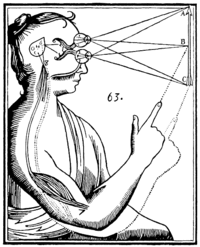
Photo from wikipedia
Alzheimer’s disease (AD) is an irreversible n e u ro d e ge n e rat i ve d i s o rd e r t h at i s… Click to show full abstract
Alzheimer’s disease (AD) is an irreversible n e u ro d e ge n e rat i ve d i s o rd e r t h at i s responsible for around 60–80% of al l dementia cases and currently affects around 50 million people worldwide. As the population’s life span tends to increase, current predictions suggest that by 2050, 152 million people worldwide will suffer from dementia (Balsinha, 2019). While the exact cause of AD remains obscure, various hypotheses regarding AD etiology have been described in the last decades. According to the amyloid hypothesis, the pathogenic changes related to AD start with the accumulation of amyloid-beta (Aβ) in the brain. These Aβ peptides form oligomers and insoluble amyloid plaques which are neurotoxic and trigger harmful downstream events such as the aggregation of the microtubule-associated protein Tau into neurofibrillary tangles, chronic inflammation, and brain atrophy.
Journal Title: Neural Regeneration Research
Year Published: 2022
Link to full text (if available)
Share on Social Media: Sign Up to like & get
recommendations!